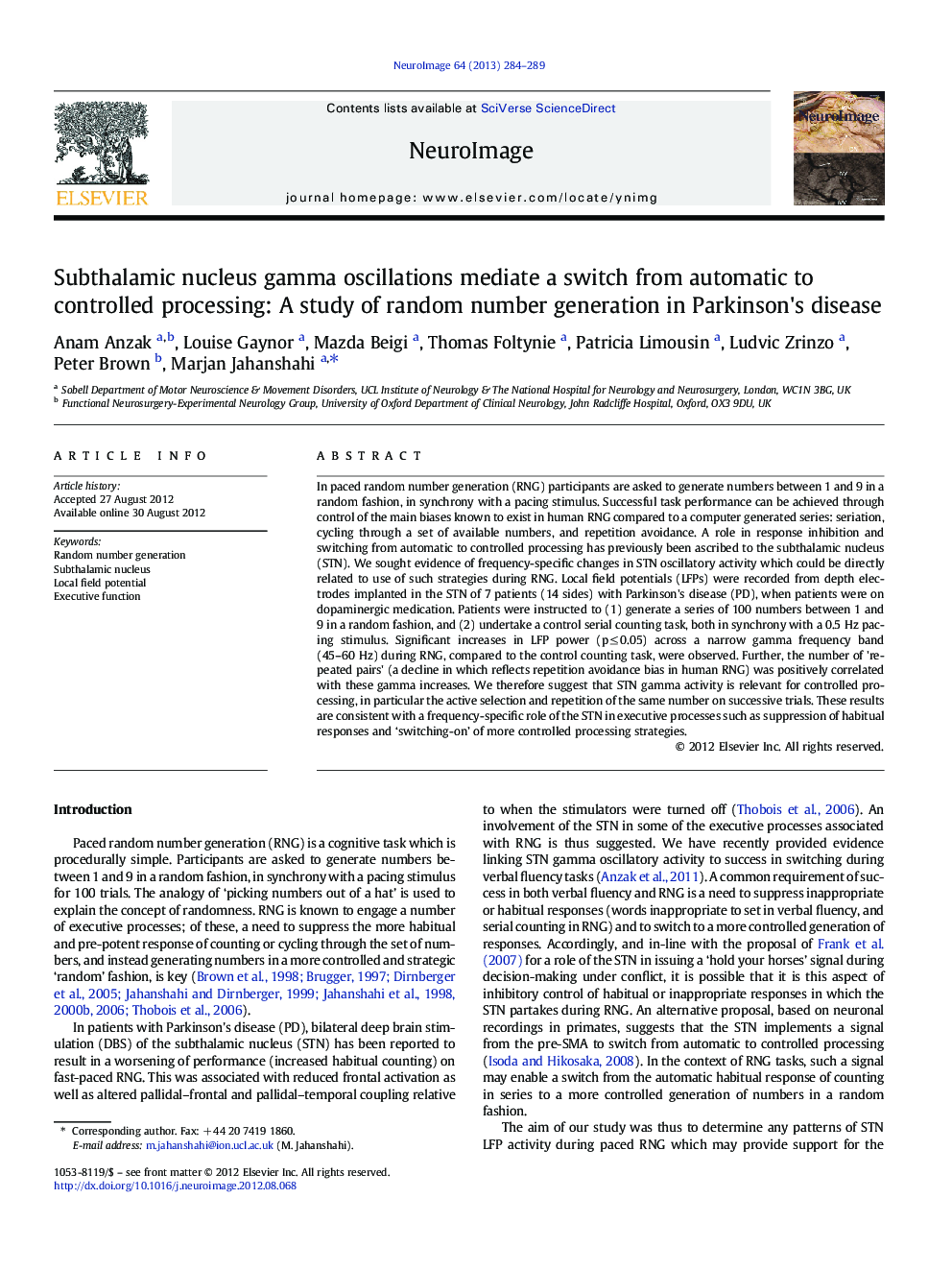| Article ID | Journal | Published Year | Pages | File Type |
|---|---|---|---|---|
| 6030976 | NeuroImage | 2013 | 6 Pages |
In paced random number generation (RNG) participants are asked to generate numbers between 1 and 9 in a random fashion, in synchrony with a pacing stimulus. Successful task performance can be achieved through control of the main biases known to exist in human RNG compared to a computer generated series: seriation, cycling through a set of available numbers, and repetition avoidance. A role in response inhibition and switching from automatic to controlled processing has previously been ascribed to the subthalamic nucleus (STN). We sought evidence of frequency-specific changes in STN oscillatory activity which could be directly related to use of such strategies during RNG. Local field potentials (LFPs) were recorded from depth electrodes implanted in the STN of 7 patients (14 sides) with Parkinson's disease (PD), when patients were on dopaminergic medication. Patients were instructed to (1) generate a series of 100 numbers between 1 and 9 in a random fashion, and (2) undertake a control serial counting task, both in synchrony with a 0.5 Hz pacing stimulus. Significant increases in LFP power (p â¤Â 0.05) across a narrow gamma frequency band (45-60 Hz) during RNG, compared to the control counting task, were observed. Further, the number of 'repeated pairs' (a decline in which reflects repetition avoidance bias in human RNG) was positively correlated with these gamma increases. We therefore suggest that STN gamma activity is relevant for controlled processing, in particular the active selection and repetition of the same number on successive trials. These results are consistent with a frequency-specific role of the STN in executive processes such as suppression of habitual responses and 'switching-on' of more controlled processing strategies.
⺠Paced RNG is associated with increases in 45-60 Hz gamma STN LFP power. ⺠Gamma increases correlate with active selection and repetition of the same number. ⺠We relate STN gamma to a switch from automatic to controlled processing.
